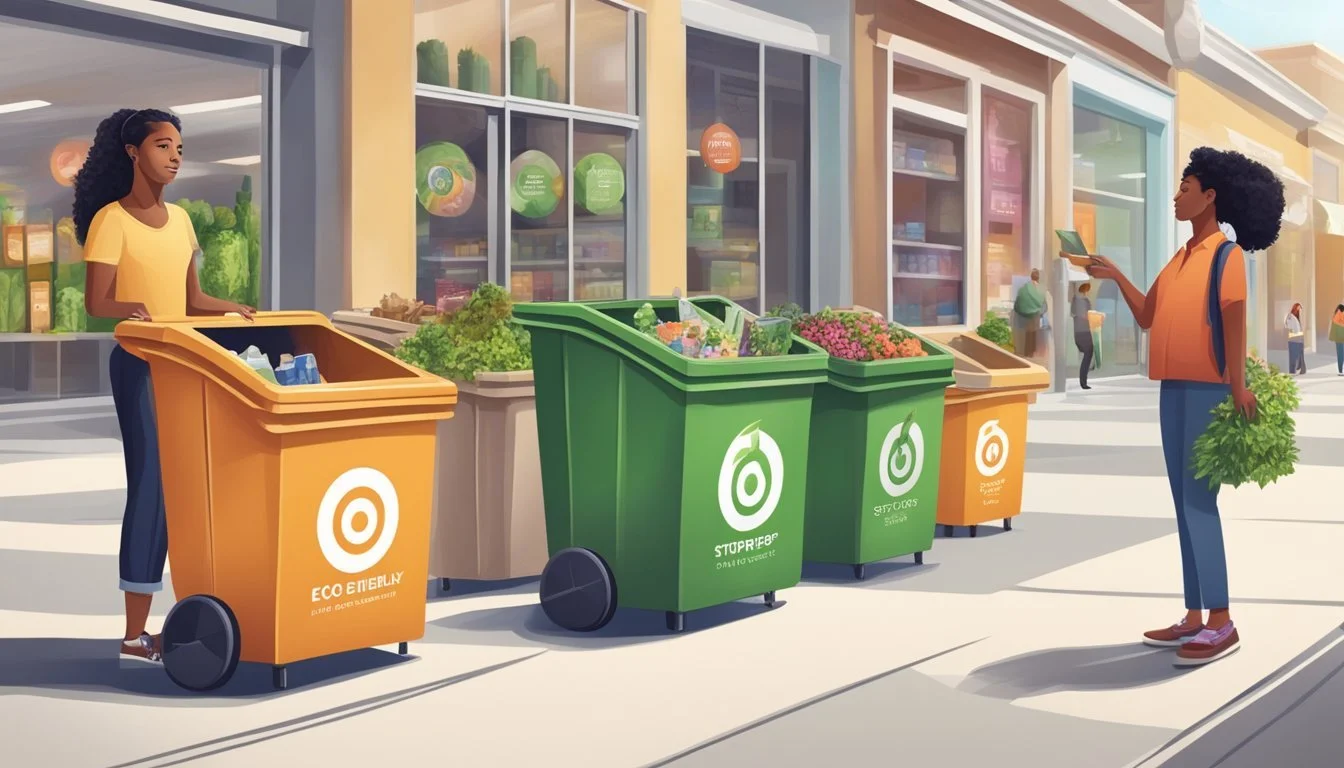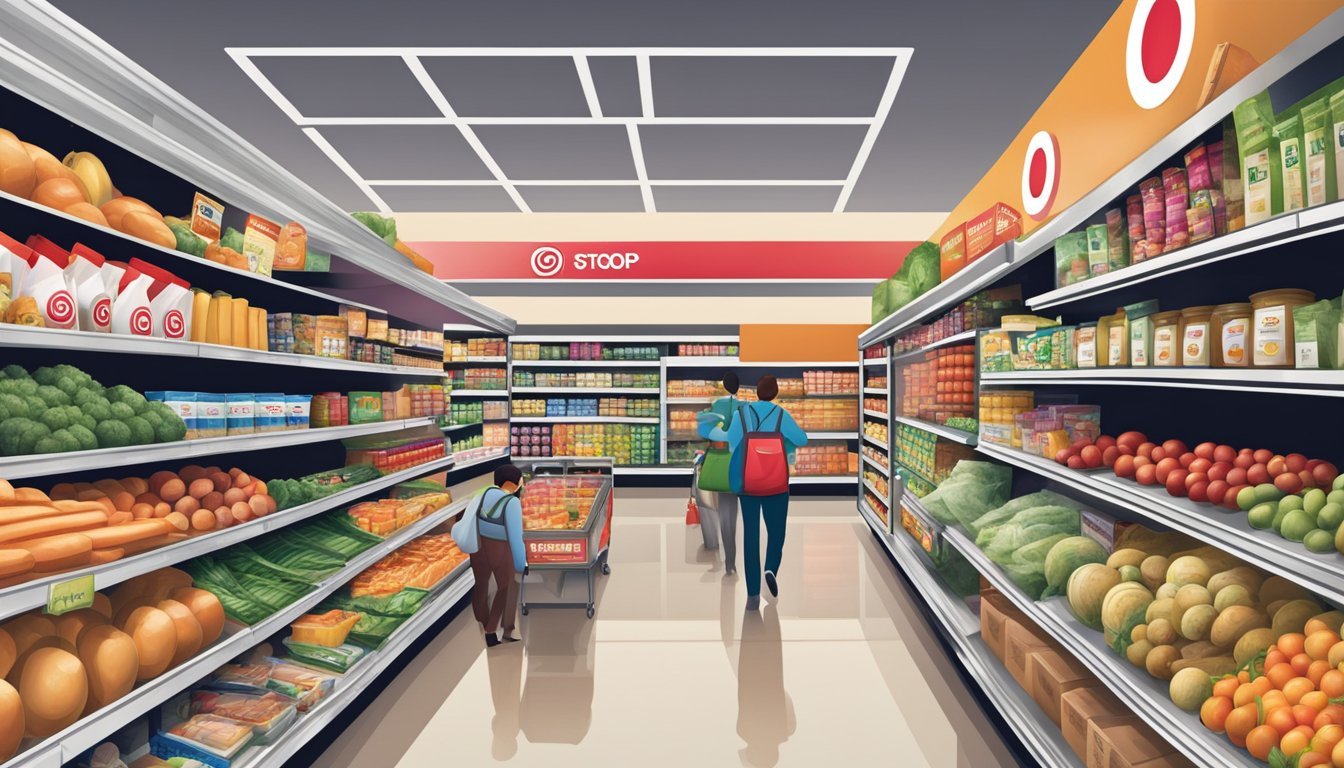Target vs Stop & Shop
A Comprehensive Comparison of Prices, Selection, and Service
Grocery shopping is an essential part of everyday life, and choosing the right store can significantly impact both your budget and satisfaction. Target and Stop & Shop are two popular options that cater to different consumer needs.
Target offers competitive prices on groceries and household items, while Stop & Shop provides a more traditional supermarket experience with a wider selection of fresh produce and specialty items. The choice between these two stores often comes down to individual preferences and shopping habits.
Both Target and Stop & Shop have their strengths in the grocery market. Target's streamlined approach appeals to those seeking convenience and value, while Stop & Shop's extensive offerings cater to consumers who prioritize variety and fresh ingredients. The shopping experience at each store reflects these differences, with Target's bright, modern atmosphere contrasting Stop & Shop's more conventional grocery store layout.
History and Overview of Target and Stop & Shop
Target and Stop & Shop have both played significant roles in shaping America's retail landscape. These companies have unique origin stories and have evolved to meet changing consumer needs over the decades.
Target's Evolution in Retail
Target began as Goodfellow Dry Goods in 1902 in Minneapolis, Minnesota. The company rebranded as Target Corporation in 1962, launching its first discount store in Roseville, Minnesota.
Target rapidly expanded across the United States in the following decades. It became known for its "cheap chic" merchandise and distinctive red bullseye logo.
In the 1990s and 2000s, Target focused on improving its grocery offerings. The company introduced fresh produce and expanded its food sections to compete with traditional supermarkets.
Today, Target operates over 1,800 stores nationwide. It has become a one-stop shop for clothing, home goods, electronics, and groceries.
Stop & Shop's Regional Influence
Stop & Shop's roots trace back to 1892 when Solomon and Jeanie Rabinowitz opened a grocery shop called the Greenie Store in Boston's North End. The company officially started as Economy Grocery Stores in 1914 in Somerville, Massachusetts.
In 1947, the business changed its name to Stop & Shop, Inc. The company went public in 1925 and began diversifying beyond food in 1961.
Stop & Shop grew to become a major regional supermarket chain in the Northeast. It introduced the first Super Stop & Shop format in 1982, offering larger stores with expanded departments.
The company now operates over 400 stores across the northeastern United States. Stop & Shop remains a significant player in the regional grocery market, particularly in New England.
Store Locations and Accessibility
Target and Stop & Shop have different geographic footprints, impacting their accessibility for shoppers. Target operates nationwide, while Stop & Shop focuses on the Northeast region.
Target's Nationwide Presence
Target boasts over 1,800 stores across all 50 U.S. states and the District of Columbia. This widespread presence makes Target accessible to a large portion of the American population.
Urban areas often have multiple Target locations, including smaller-format stores in city centers. These compact stores cater to the needs of urban dwellers and commuters.
Suburban Target stores typically feature larger layouts with ample parking, appealing to families and those who prefer one-stop shopping experiences.
Stop & Shop's Footprint in the Northeast
Stop & Shop operates more than 400 stores primarily in the Northeast, including Massachusetts, Connecticut, Rhode Island, New York, and New Jersey. This regional focus allows the chain to tailor its offerings to local preferences.
Stop & Shop stores are often found in suburban and urban locations, with many situated in neighborhood shopping centers. This positioning makes them convenient for local residents to access.
The chain's strong presence in certain Northeast communities has made it a familiar and trusted option for many families in the region. Some areas may have multiple Stop & Shop locations within close proximity, enhancing convenience for shoppers.
Product Assortment and Availability
Target and Stop & Shop offer distinct product selections to cater to different shopper needs. Their assortments vary in terms of fresh produce, meat quality, and specialty options.
Comparing Produce and Meat Quality
Target's produce section typically features a more limited selection compared to Stop & Shop. Stop & Shop often provides a wider variety of fruits and vegetables, including some locally sourced options. The quality of produce at Stop & Shop is generally considered fresher due to higher turnover rates.
In the meat department, Stop & Shop tends to offer a broader range of cuts and options. Their butcher counter allows for custom cuts and special orders. Target's pre-packaged meat selection is more streamlined, focusing on popular cuts and convenience items.
Stop & Shop's deli counter provides freshly sliced meats and cheeses, while Target's deli options are primarily pre-packaged.
Availability of Organic and Specialty Food
Target has made significant strides in expanding its organic offerings, particularly through its Good & Gather brand. Organic produce, dairy, and pantry staples are readily available.
Stop & Shop typically presents a more extensive organic produce section. They often feature a dedicated organic area within the store, making it easier for shoppers to find these items.
For specialty foods, Stop & Shop generally offers a wider selection. This includes international ingredients, gluten-free products, and gourmet items. Target's specialty food options are more limited but have been growing, especially in urban locations.
Both stores carry their own private label organic brands, providing cost-effective alternatives to national organic brands.
Pricing and Value for Money
Target and Stop & Shop offer different pricing strategies and value propositions for grocery shoppers. Their approaches to everyday prices, discounts, and store brands impact overall affordability.
Everyday Prices and Discounts
Target generally maintains lower everyday prices on groceries compared to Stop & Shop. The retailer's pricing strategy aims to attract cost-conscious shoppers with competitive rates on staple items.
Stop & Shop tends to have higher regular prices but offers frequent sales and promotions. Their loyalty program provides additional savings opportunities through personalized deals and gas points.
Target runs weekly promotions and offers a 5% discount for RedCard holders. This credit or debit card option can lead to significant savings for regular shoppers.
Store Brands and National Brands
Target's Good & Gather brand provides affordable alternatives to national brands across many product categories. These store brand items often match or exceed the quality of name-brand counterparts at lower prices.
Stop & Shop's store brands, including Nature's Promise and SB, offer budget-friendly options. However, their selection may be more limited compared to Target's extensive private label offerings.
Both retailers stock a wide range of national brands. Target's larger stores typically provide more variety in this area. Stop & Shop may have better prices on some national brands during promotional periods.
Customer Shopping Experience
Target and Stop & Shop offer distinct in-store environments and digital options for grocery shoppers. Both retailers aim to provide convenient ways for customers to obtain their essentials.
In-Store Navigation and Convenience
Target's stores feature wide aisles and clear signage, making navigation straightforward. The retailer's layout often groups similar items together, streamlining the shopping process. Many Target locations include in-store Starbucks cafes, allowing customers to grab a coffee while they shop.
Stop & Shop stores typically have a more traditional grocery layout. They offer larger produce sections and extensive deli counters. The chain's stores often include pharmacy services, providing added convenience for customers picking up prescriptions alongside groceries.
Both retailers invest in self-checkout options to reduce wait times. Target tends to have more self-checkout kiosks available, potentially leading to quicker exits during busy periods.
Online Shopping and Grocery Delivery Options
Target partners with Shipt for same-day delivery services. Customers can place orders through the Target app or website. The retailer also offers Drive Up service, where shoppers can place an order online and have it brought to their car.
Stop & Shop provides online ordering through its website and mobile app. The chain utilizes Peapod for delivery services in many areas. Customers can choose delivery time slots that fit their schedules.
Both retailers have expanded their pickup options in recent years. Target's Drive Up service has gained popularity for its convenience and speed. Stop & Shop offers designated pickup areas in most stores for online orders.
Comparative Market Strategies
Target and Stop & Shop employ distinct approaches to attract and retain customers in the competitive grocery landscape. Their marketing tactics and positioning strategies play crucial roles in shaping consumer perceptions and loyalty.
Marketing and Brand Loyalty
Target focuses on creating a stylish, upscale image while offering affordable prices. The retailer's "Expect More. Pay Less." slogan resonates with budget-conscious shoppers seeking quality products. Target's exclusive brands, like Good & Gather for groceries, help build a loyal following.
Stop & Shop emphasizes its community roots and long-standing presence in the Northeast. The chain's loyalty program, Stop & Shop GO Rewards, offers personalized deals and gas savings to incentivize repeat visits. Stop & Shop also partners with local suppliers to appeal to customers who prioritize supporting regional businesses.
Both stores leverage digital marketing and mobile apps to reach tech-savvy consumers. Target's Cartwheel app and Stop & Shop's mobile app provide easy access to coupons and weekly specials.
Target and Stop & Shop in the Competitive Landscape
Target competes with other discount stores and supercenters like Walmart, offering a broader range of products beyond groceries. Its "cheap chic" image attracts a diverse customer base, including younger shoppers and families.
Stop & Shop faces competition from other regional grocery chains such as ShopRite and Star Market. To differentiate itself, Stop & Shop invests in store renovations and expanded fresh food sections.
Both retailers are adapting to the rise of online grocery shopping. Target's acquisition of Shipt and Stop & Shop's partnership with Instacart demonstrate their commitment to e-commerce. Target's same-day delivery and in-store pickup options give it an edge in convenience.
Price competition remains fierce. Target's "price match guarantee" aims to build trust, while Stop & Shop regularly offers promotional discounts to stay competitive with discount stores and other supermarkets.
Environmental and Ethical Considerations
Target and Stop & Shop have implemented various sustainability initiatives and community programs. Their efforts aim to reduce environmental impact and support local communities.
Sustainability Efforts and Community Impact
Target has set ambitious sustainability goals. By 2040, the company plans for all its owned brand products to be designed for a circular future. This commitment demonstrates Target's long-term vision for environmental responsibility.
Stop & Shop focuses on reducing food waste. The supermarket chain partners with local food banks to donate unsold, edible groceries. This initiative helps feed those in need while minimizing landfill waste.
Both retailers have taken steps to reduce plastic usage. Target offers reusable bag options and incentives for customers who bring their own bags. Stop & Shop has implemented similar programs to encourage eco-friendly shopping habits.
In terms of community impact, Target invests in local education programs. The company provides grants to schools and non-profit organizations that support childhood literacy and STEM education.
Stop & Shop contributes to community health initiatives. The supermarket chain sponsors nutrition education programs and partners with local hospitals to promote wellness.
Conclusion and Final Thoughts
Target and Stop & Shop each offer distinct advantages for grocery shoppers. Target excels in efficiency, with quick checkout processes and a diverse product range beyond just groceries. Its layout appeals to those who enjoy combining grocery runs with other shopping needs.
Stop & Shop shines in its grocery-specific focus. The chain boasts a wider selection of specialty items, particularly in the cheese department. Their century-long history in the Northeast has cultivated a loyal customer base.
Price-conscious consumers may find better deals at Target, especially when factoring in their broader merchandise discounts. Stop & Shop, while generally pricier, often provides higher quality in certain product categories.
Customer ratings reveal mixed opinions. Stop & Shop received "superior" ratings from 27% of surveyed customers. Target's grocery offerings have improved in recent years, garnering more positive feedback than in past surveys.
Both stores have areas for improvement. Target could expand its fresh produce and meat selections, while Stop & Shop might benefit from more competitive pricing strategies.
Ultimately, the choice between Target and Stop & Shop depends on individual priorities. Shoppers seeking convenience and diverse product options may prefer Target. Those valuing traditional grocery store amenities and specialty selections might lean towards Stop & Shop.










